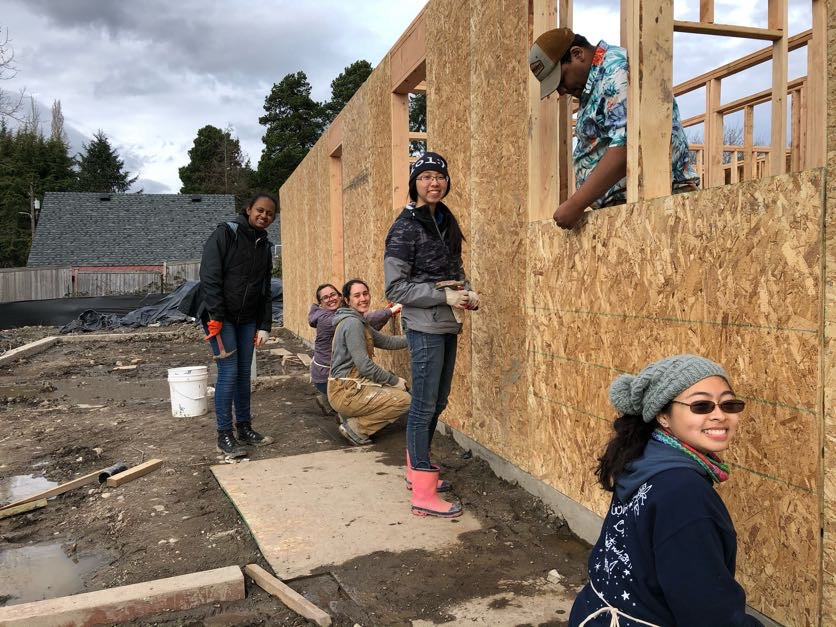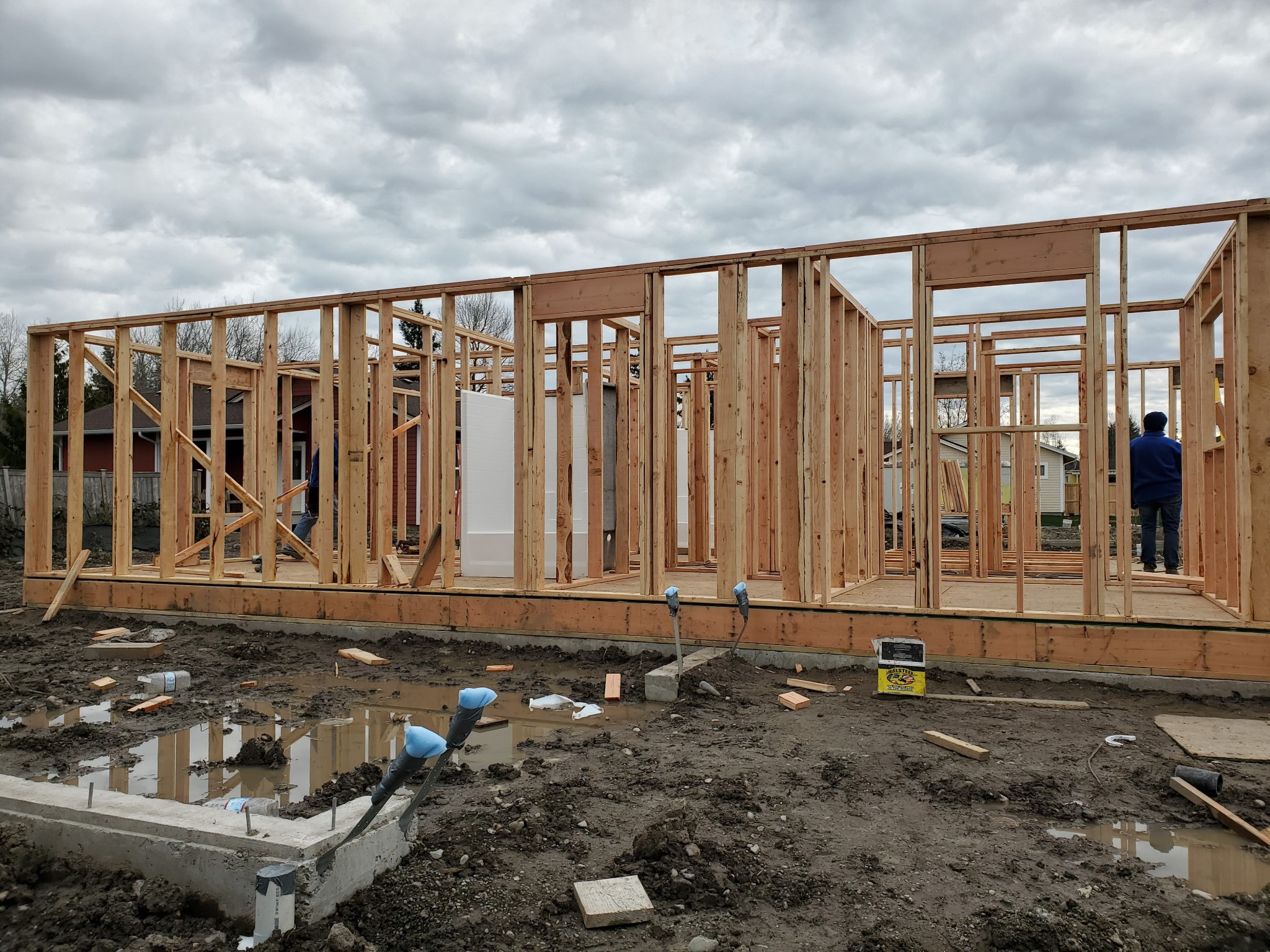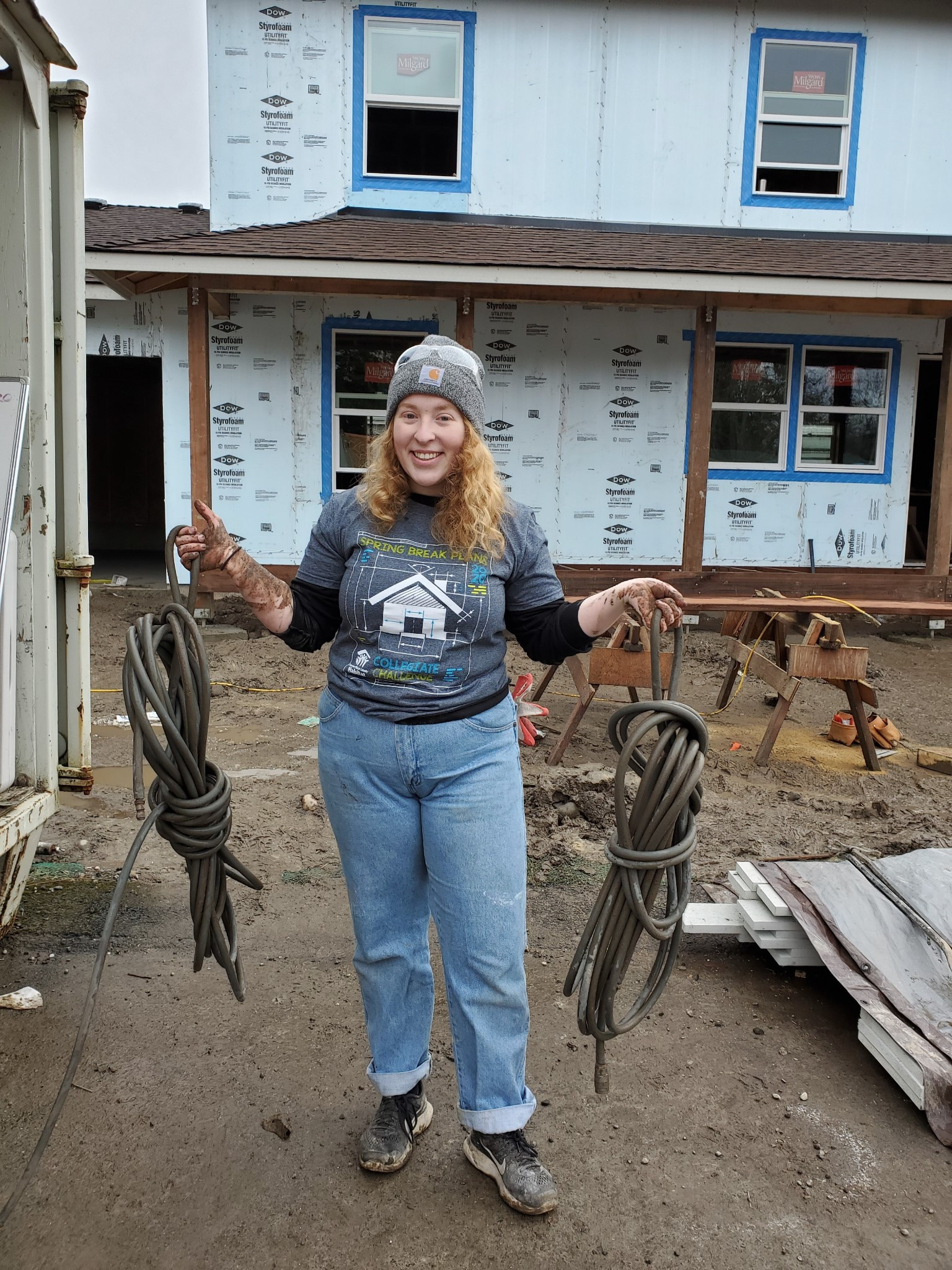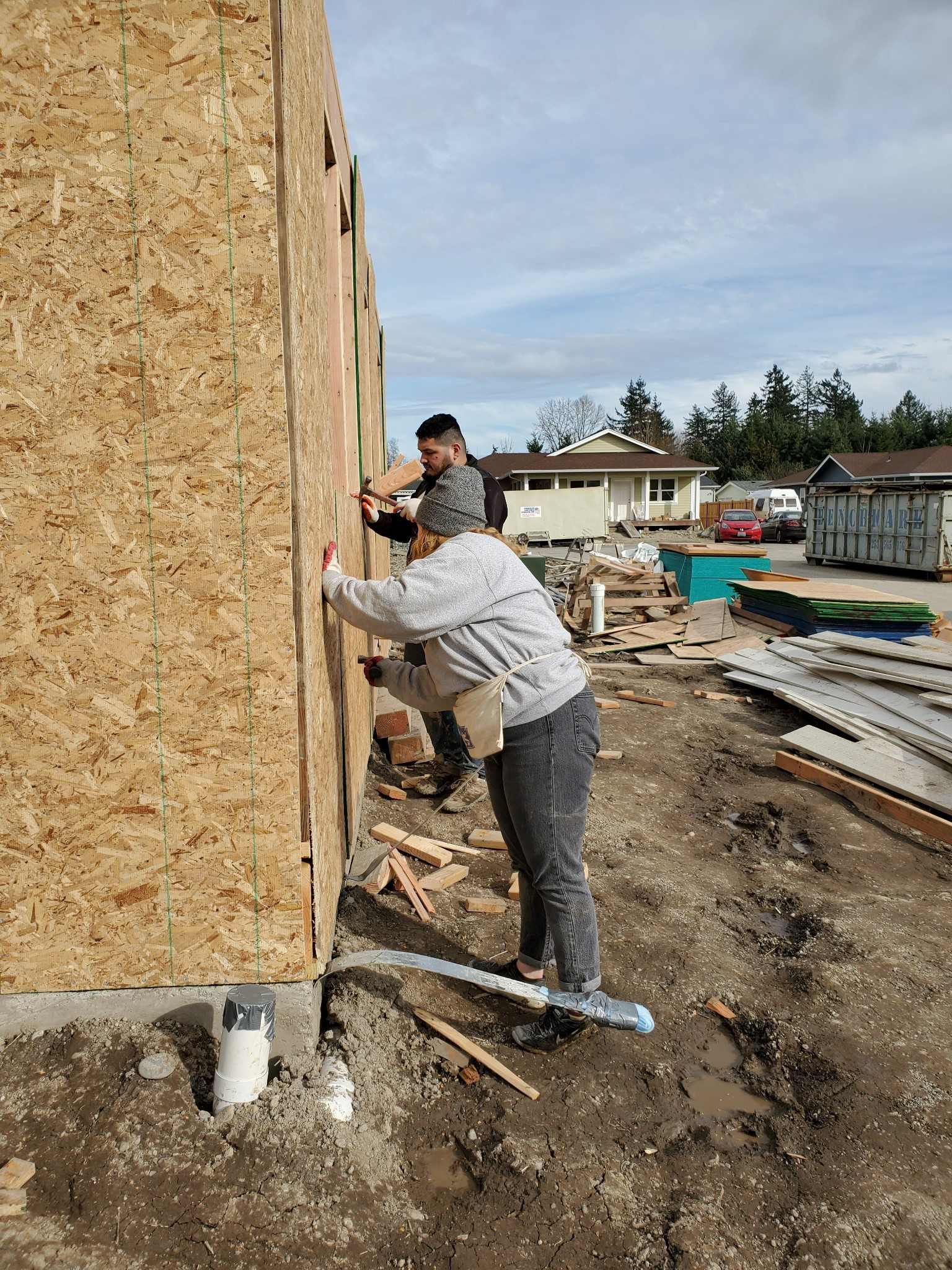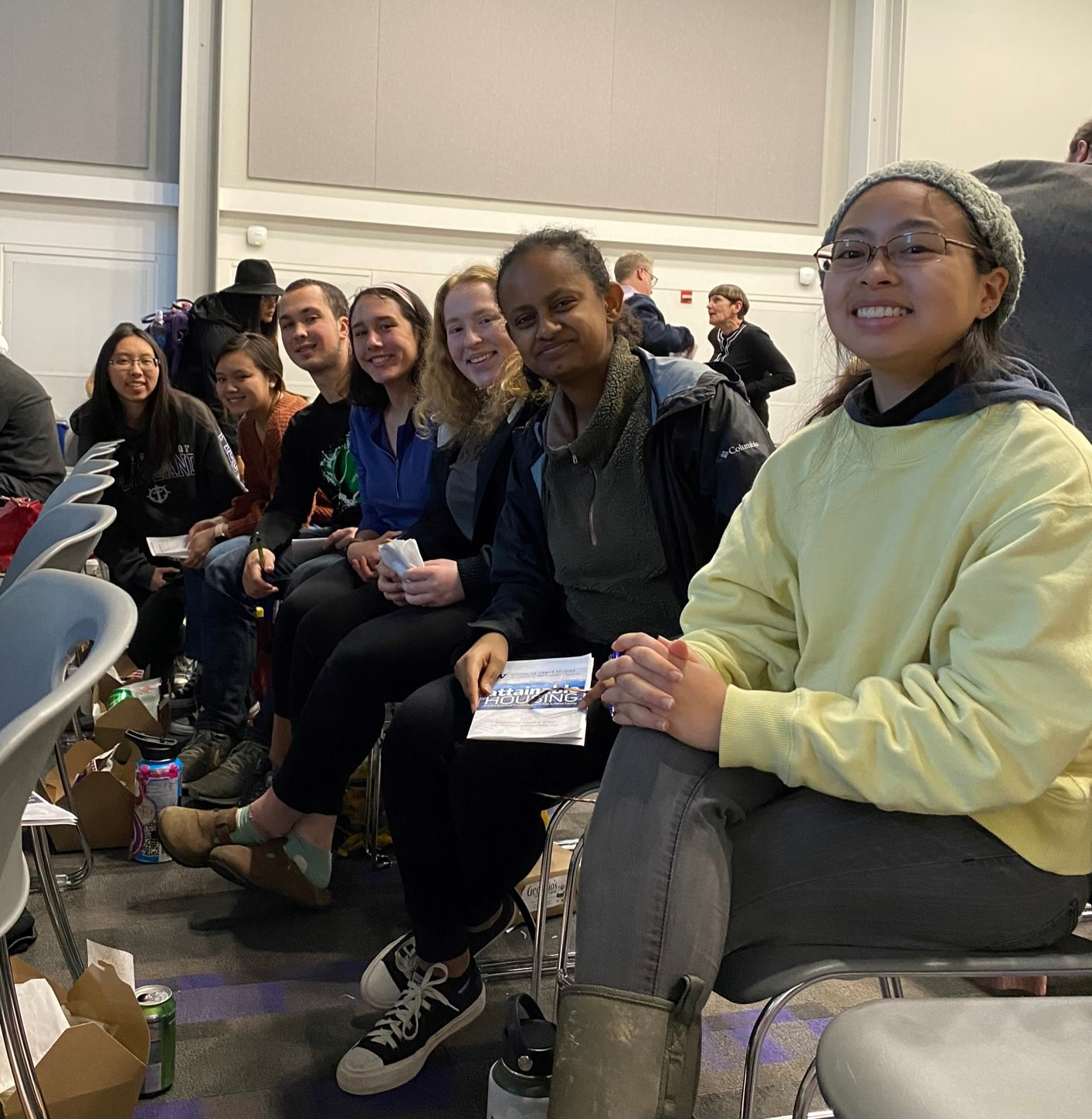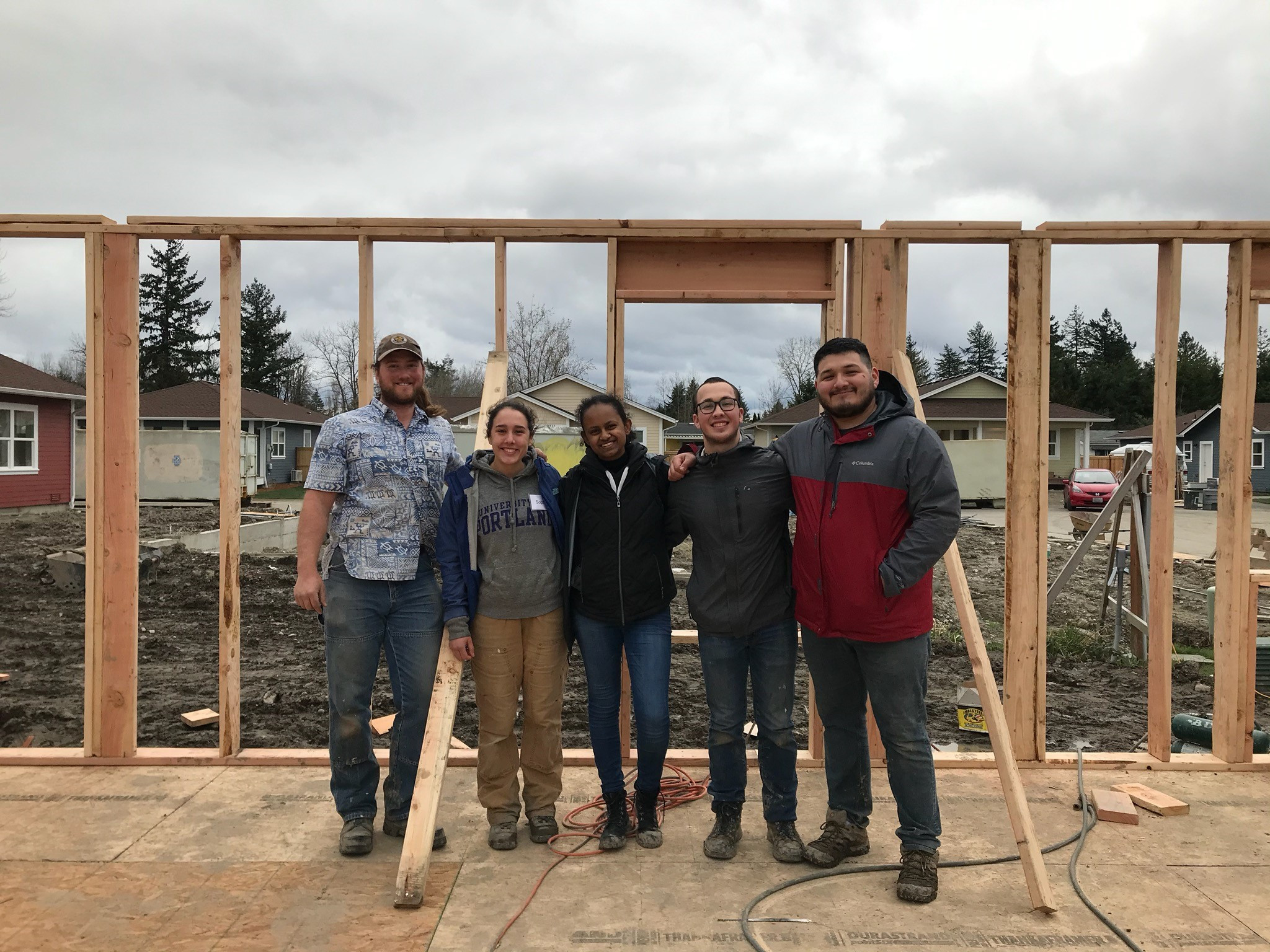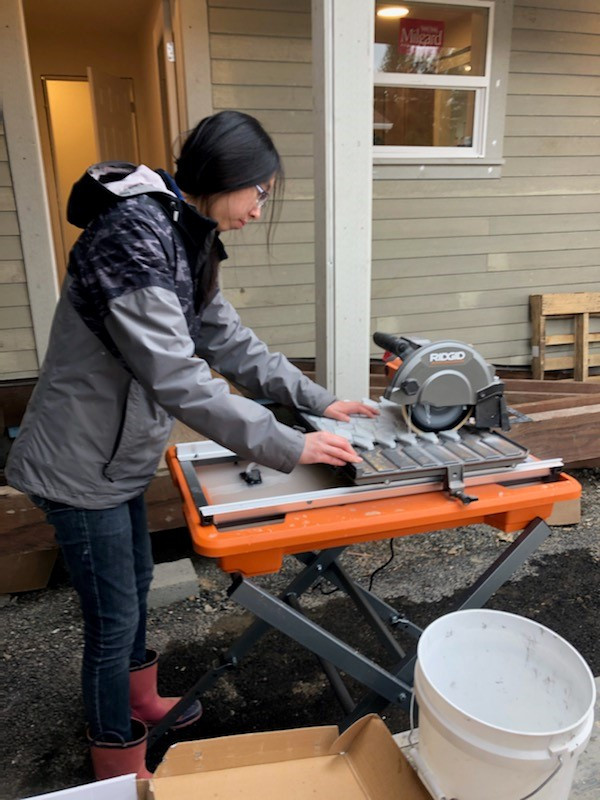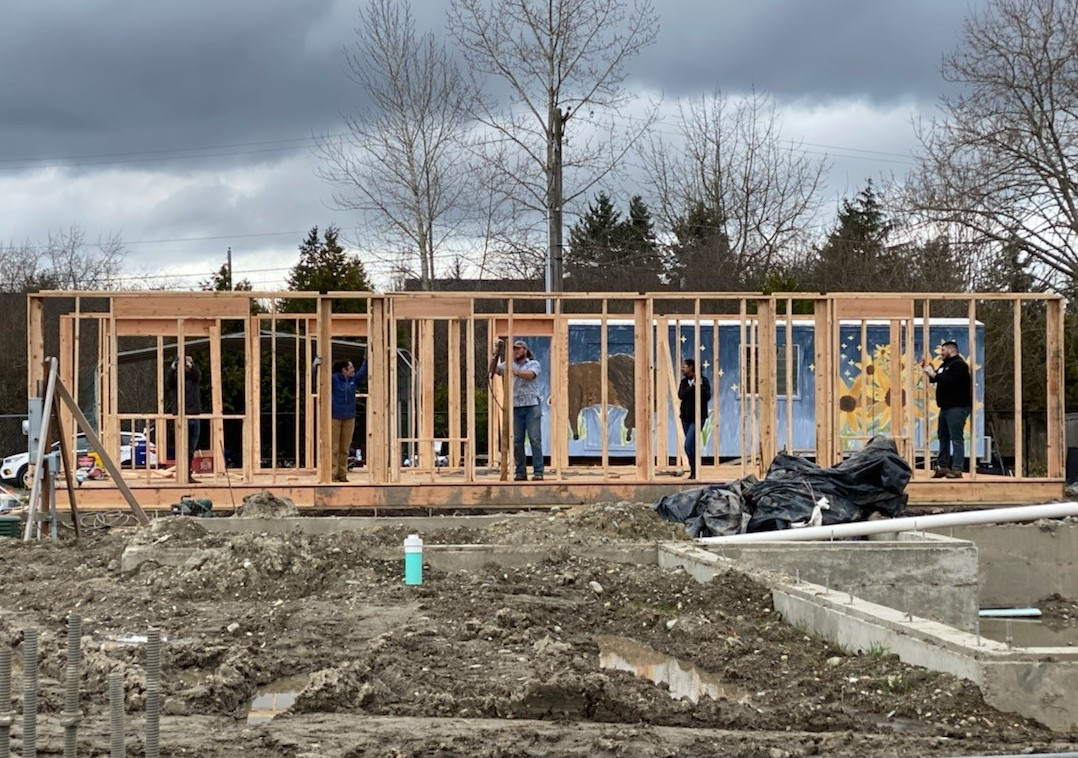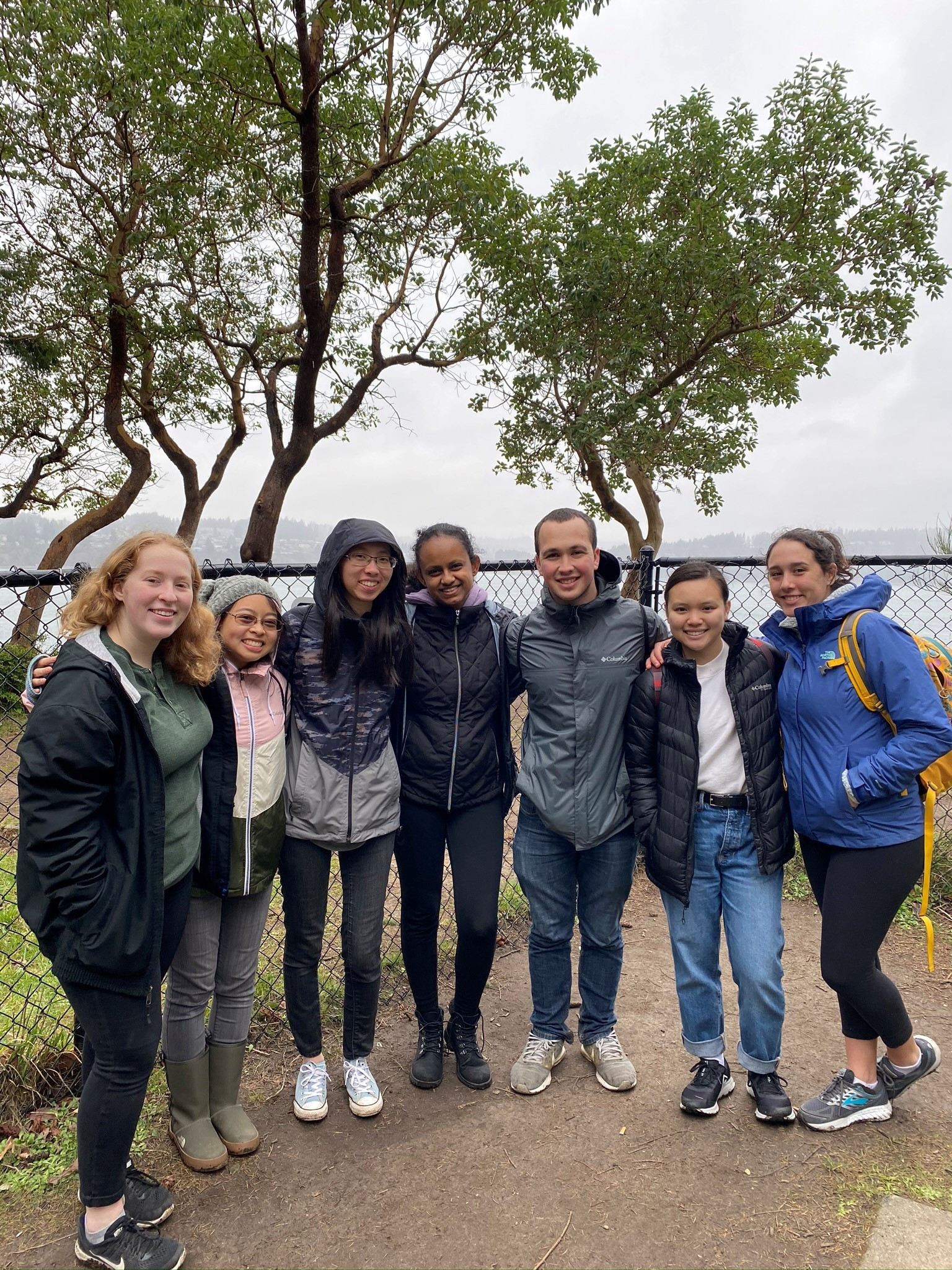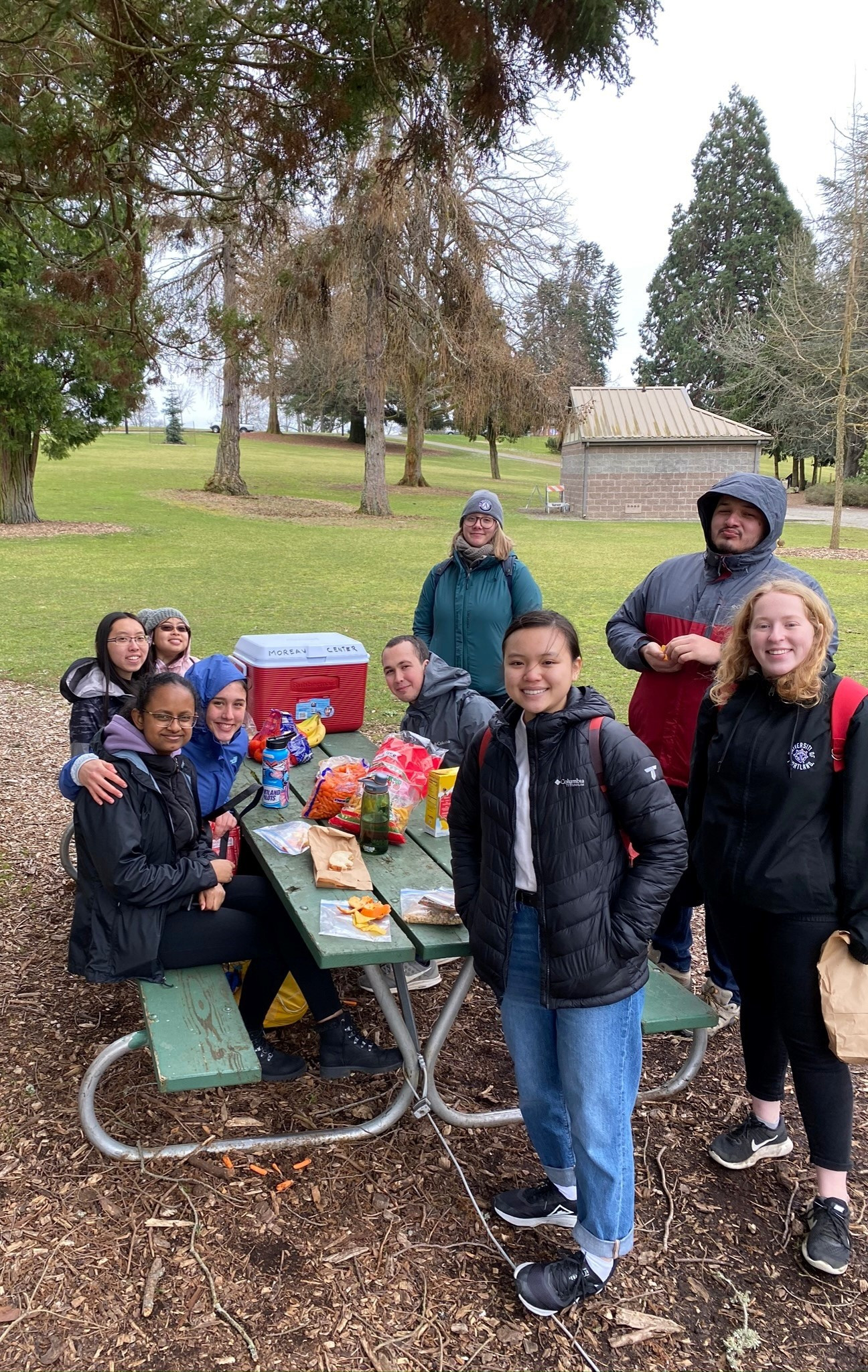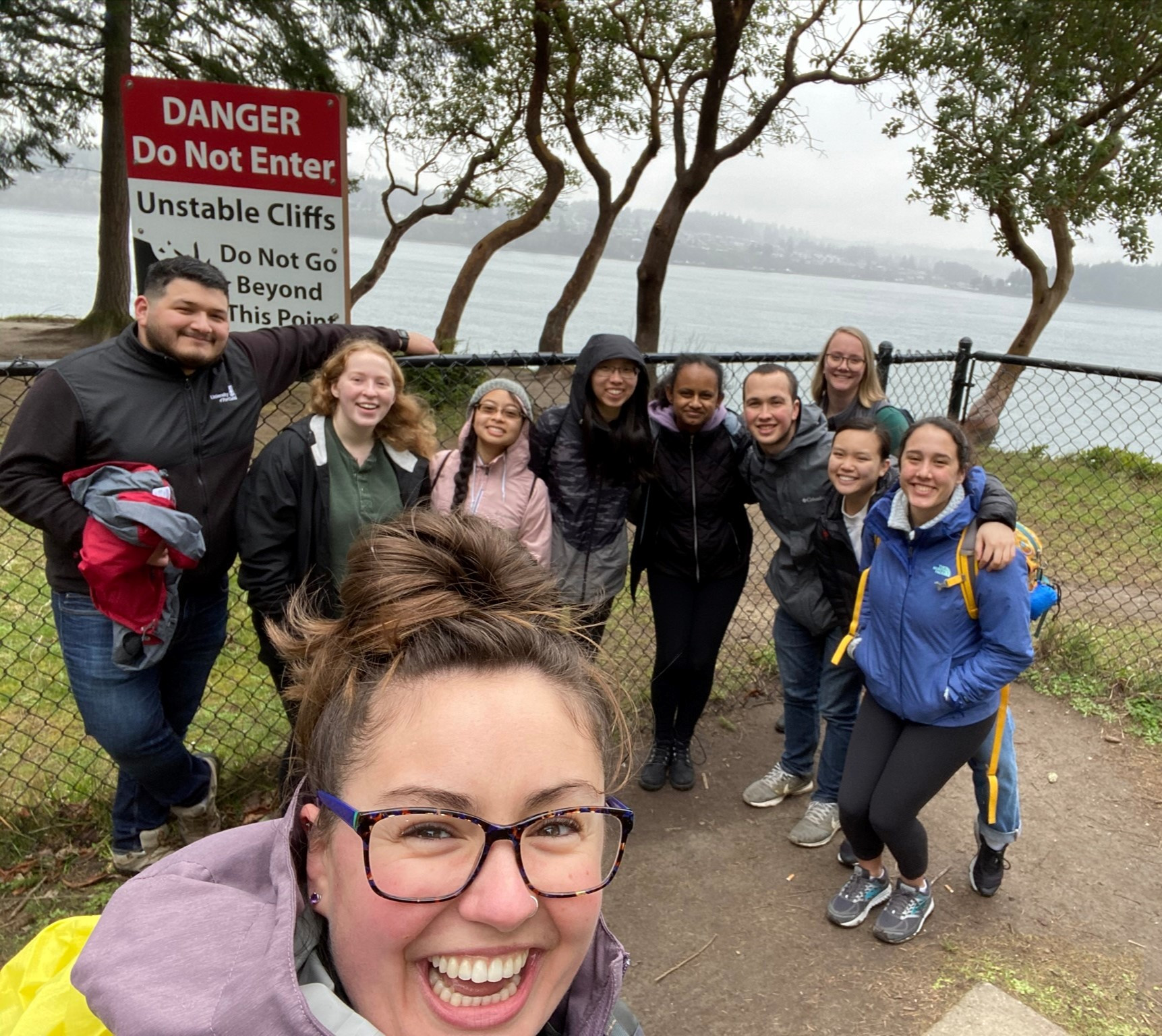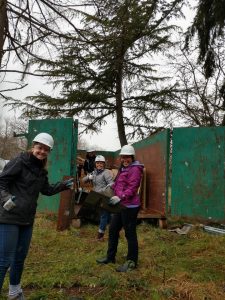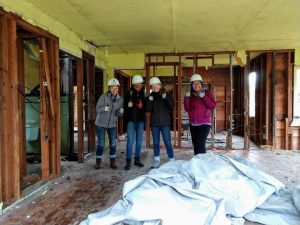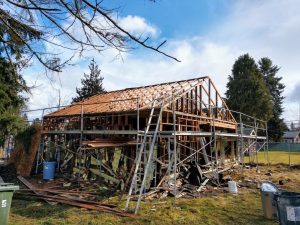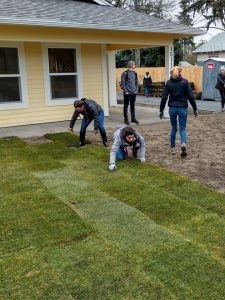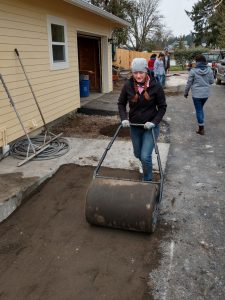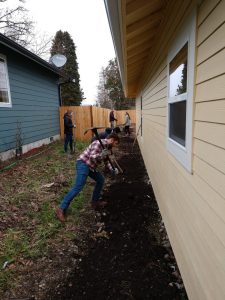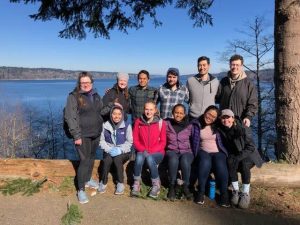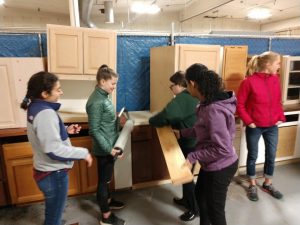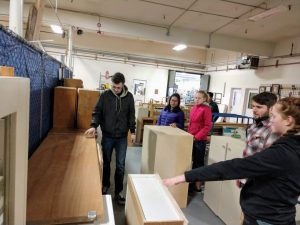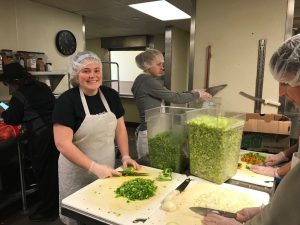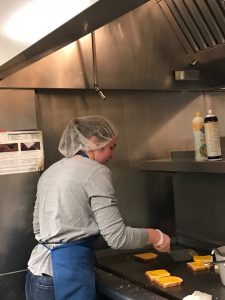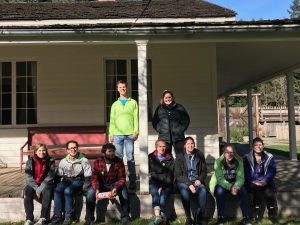March 6th
Today was our last day on site with Habitat for Humanity. A few of us had the opportunity to finish back splashing a kitchen in one of the homes while others got to nail onto a home earthquake supports, among many other very important tasks. We met so many amazing workers and volunteers this week with Habitat for Humanity. As a group we have learned all the crucial steps in the process of building homes and all the important people who are involved in these processes. Beginning the week with the panel of people involved with the Housing affordability issue in Tacoma, we were able to root our concrete experiences on site, into the abstract issue.
This week has been very informative and eye opening into the issue of Affordable Housing, with many examples from inside Tacoma which are applicable in many other cities. Many key points that we have learned are about the stigmas placed on the term “Affordable Housing.” The idea of “Affordable Housing” comes with a negative connotation. The differences between lower case affordable housing and upper-case Affordable Housing are these stigmas. Upper case Affordable Housing connotes government intervention and subsidies housing, it creates a division between many people. Lower case affordable housing is a basic human right. This whole week we have been focused on breaking down these divisions. Creating a partnership is key, we have had the amazing opportunity to meet multiple of the homeowners. For me knowing that even though I am making even the smallest difference, these differences do not go unnoticed for the homeowners.
This week has been so amazing. We have met so many amazing people who have dedicated their lives to this issue, they are truly inspiring. I am so grateful for the opportunity to connect all the amazing concrete experiences with a much more developed idea of the abstract issue. Housing affordability is an issue that affects more than just Tacoma, it is an issue everywhere. This week has taught me that there is no easy or correct answer to the questions about housing attainability. However, it is through organizations like Habitat for Humanity and the AmeriCorps volunteers that these issues begin to be addressed.
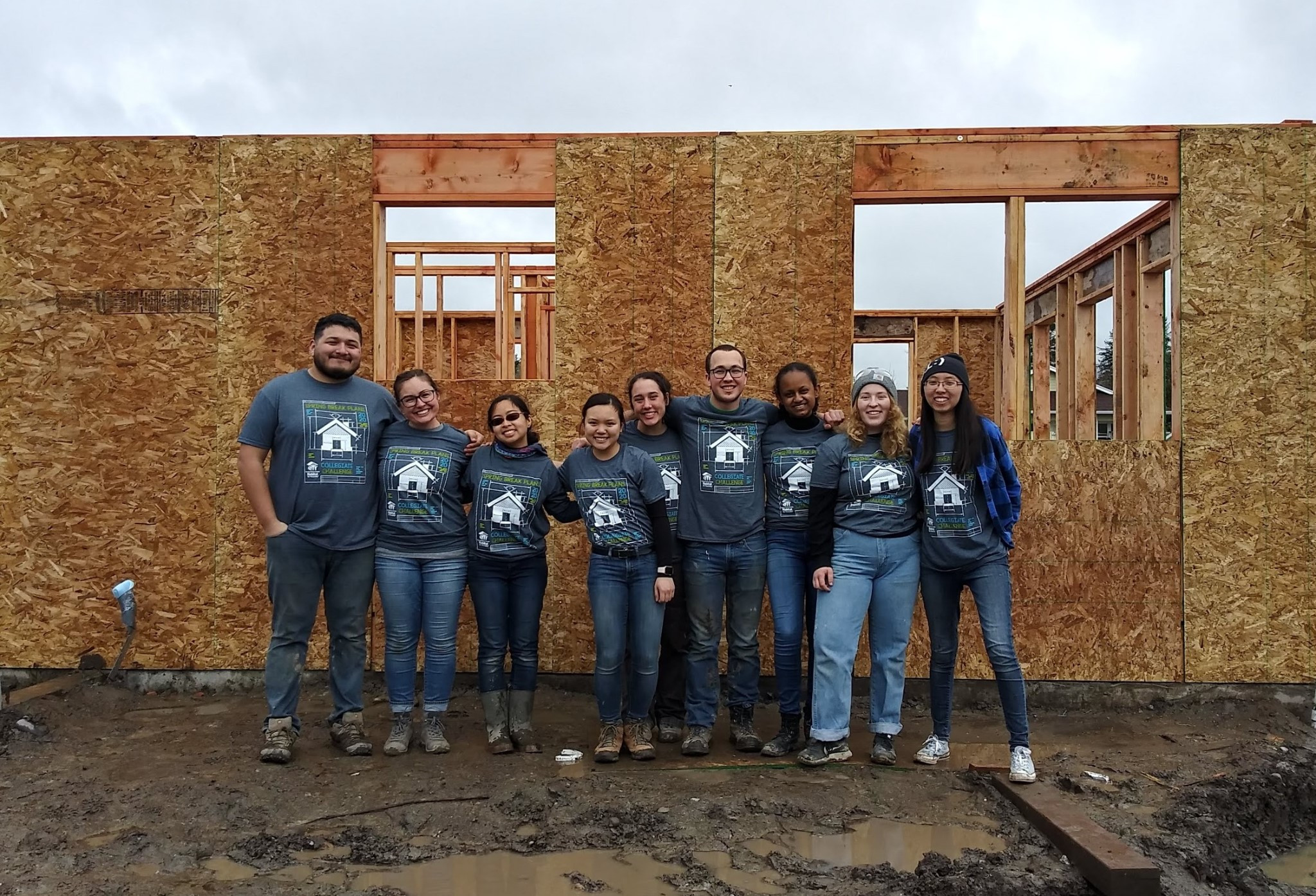
Tessa Johnson
